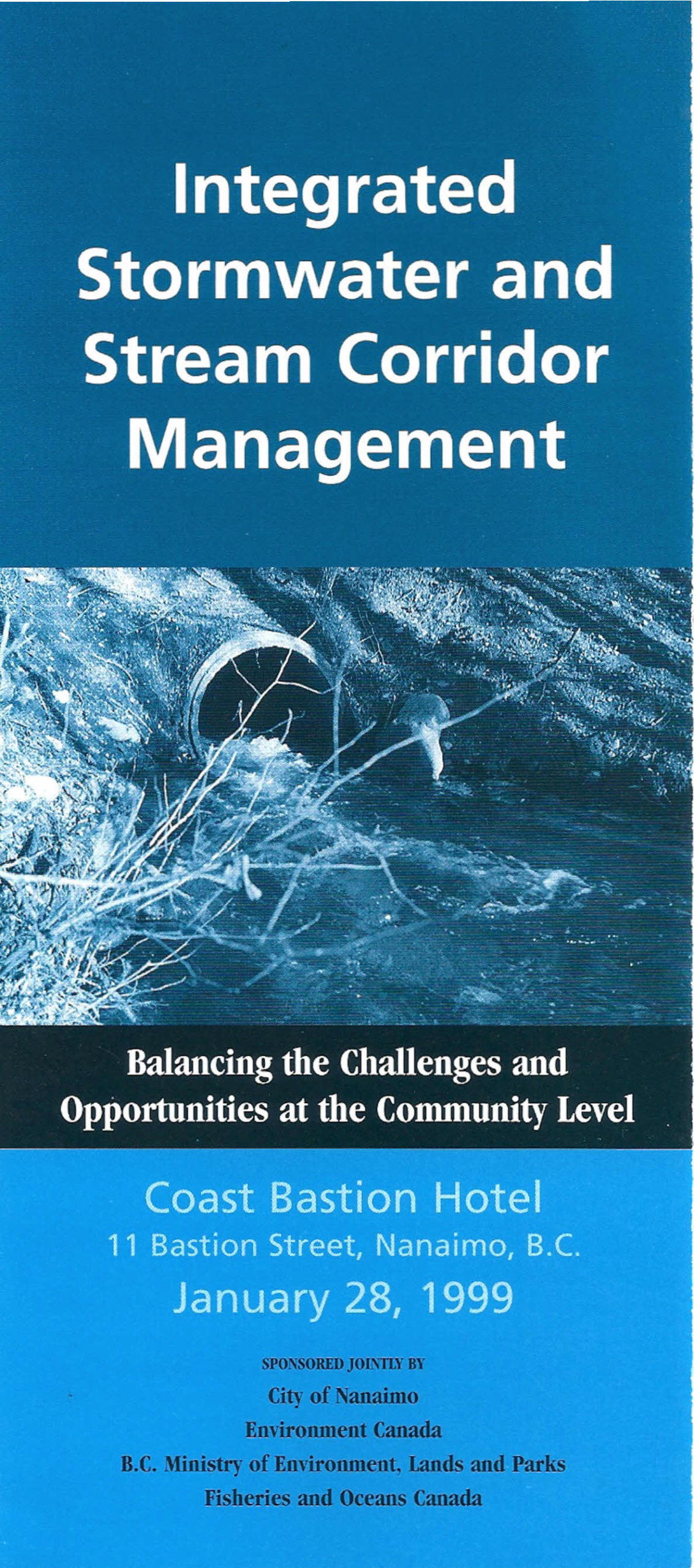NEWSLETTER: Integrated Stormwater & Stream Corridor Management (January 1999)
Note to Reader:
In October 1997, the Union of BC Municipalities convened a focus group workshop on the Fish Protection Act. At the workshop, Kim Stephens and Bill Derry led a discussion about a ‘science-based’ ecosystem approach to rainwater and stormwater management.
They had translated the emerging Washington State science into a set of communication graphics. These were known as the ‘fish pictures’. This approach enabled a common understanding among broad and diverse audiences about the impacts of urbanization on stream health.
Erik Karlsen and Peter Law were in the room on that day. This duo had a leadership role in an inter-ministry approach to the development of the streamside protection regulations. After watching the presentation by Kim Stephens and Bill Derry, they had an idea for a workshop.
Peter Law brought together an inter-agency team to organize the Nanaimo Workshop in January 1999. The theme was integrating stormwater and stream corridor management. This was the first in what became the SmartStorm Forum Series.


Guidance for an Ecosystem-based Approach
The inter-agency organizing committee for the Nanaimo SmartStorm Forum included federal, provincial and local government representation. The City of Nanaimo was the event host. The committee published a newsletter as legacy document. It was designed to provide attendees and others with guidance that would help them replace traditional strategies with ones that integrated stormwater management and stream stewardship.
This guidance document comprised ‘think pieces’ written by Erik Karlsen, Bill Derry, Kim Stephens and UBC professor Patrick Condon. They were the faculty for the forum.
“The Nanaimo Smartstorm Committee recognized that it would be a balancing act to protect property and allow economic land use, while at the same time attempting to achieve the goal of sustaining natural systems in stream corridors,” stated Kim Stephens.
“In 1999, we clearly understood that a strategy must be watershed-based to fulfil a set of guiding principles. We also recognized that this would require integration of component plans for flood risk management and environmental risk management for life/property protection and for stream bank/habitat protection, respectively. A generation ago, this represented a major departure from the traditional engineering approach.”
To Learn More:
Download a copy of Integrated Stormwater & Stream Corridor Management, released in January 1999.
Download a copy of Overview of Workshop Objectives for Integrated Stormwater & Stream Corridor Management.


